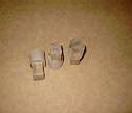Tenons
 Our wooden tenons are manufactured to enable the easy fit of handrail. Simply fit the tenon into a hole that has been previously drilled in the side post. Drop the handrail onto the squared off part of the tenon and fix off.
Our wooden tenons are manufactured to enable the easy fit of handrail. Simply fit the tenon into a hole that has been previously drilled in the side post. Drop the handrail onto the squared off part of the tenon and fix off.
A number of City Councils now have regulations in place stating that handrails must be fixed using safety tenons.
Our wooden tenons are cut from a 32mm dowel with a 19mm square on the end.
Your order can be packaged and shipped worldwide. No order too small.
The Definition of Wooden Tenons
You’ve probably heard the phrase ‘mortise and tenon joint’ or ‘mortise and tenon construction’ when referring to furniture. Unless you’ve actually done any woodworking, though, you may have only a vague idea what mortises and wooden tenons are.
The dictionary definition of tenon is:
“A wooden projection in a piece of wood made to fit into a mortise and form a joint.”
The dictionary definition of mortise is:
“A square or rectangular hole made to receive a tenon and form a joint.”
There are several different kinds and styles of wooden tenons. In many ‘arts and crafts’ furniture pieces, for instance, the tenon extends all the way through the piece of wood to which it is joined, creating part of the decoration. Wooden tenons are also often used in joining balustrades and banisters, where the round wooden dowels fit into drilled holes in the top and bottom rails of the banister. In a case like that, the wooden tenons are the same size as the piece of wood that is being joined.
Generally, if the pieces to be joined are both square, the tenon is cut on a jigsaw from the end of the wooden piece. In that case, the wooden tenon is smaller in dimension than the rest of the length of the piece. There are standard rules of thumb for cutting wooden tenons. In general:
The piece into which you are cutting the tenon is called the ‘work piece’. The wooden tenon should be 1/3 the thickness of the work piece, and centered on it. It should also be at least 2/3 the width of the work piece, and at least half an inch long. Those basic measurements ensure a strong joint.
Very often, wooden dowel pins are used to secure tenons in place, though it’s even more common for woodworkers to use glue to fix the wooden tenons securely into the mortise. In any case, a well made mortise and tenon joint will hold with or without additional glue and jointing.
Now for those of you in the staircase business, we have tenons that are specifically designed as an added safety factor for when you are attaching the handrails.
Contact us:
Ph: 07 3889 3666
Fax: 07 3889 3666